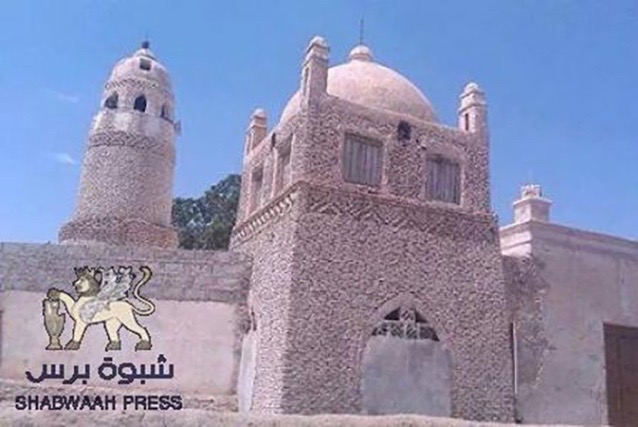Before – Mallawi Museum: Photo via Egypt’s Heritage Task Force: 21 August 2013
After – Mallawi Museum: Photo via Egypt’s Heritage Task Force: 21 August 2013
The Malawi Museum is a small gem in the city of Minya that displays rare artifacts from the surrounding region. The museum houses more than 1,080 artifacts including Greco-Roman period Egyptian sculptures, animal mummies, and religious artifacts that have endured in extraordinarily good condition for more than 2,000 years. The Greco-Roman artifacts and funerary masks are unlike objects found anywhere else in the world, representing a key turning point in Egyptian civilization by displaying the depth of Greco-Roman influence on Egyptian society – an early picture of globalization.
In July 2013, the Malawi Museum was targeted for looting by extremists protesting the ouster of President Mohamed Morsi. Over 1,000 artifacts were stolen or destroyed and the museum building was set ablaze amid smashed artifacts too large for the extremists to carry. Recovery efforts have led to more than half of the artifacts being returned to the museum, but many of the rare and most historically resonant pieces remain missing.
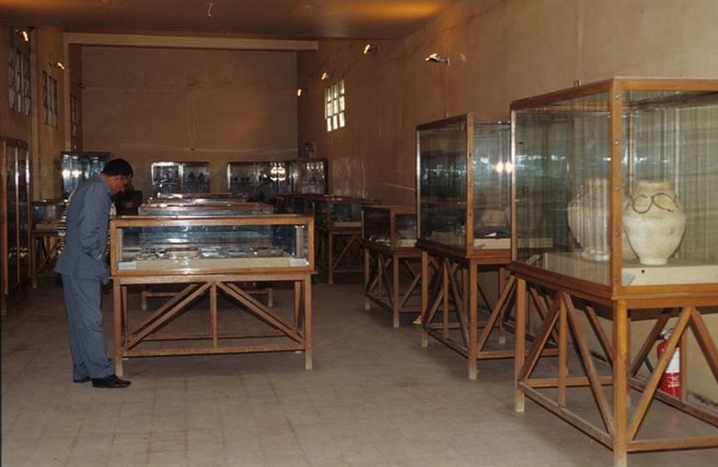
The archaeological site of Abu Sir al Malaq is over 5,000 years old and rests 70 miles outside of Cairo. This ancient site is believed to have served as a burial ground for ancient Egypt’s elite from 3,250 BCE until 700 CE, the period from Egypt’s 17th Dynasty through the Coptic Era. Known for its pristine artifacts and elaborately painted mummies, this site was named to honor the Pharaonic god, Osiris.
Grave robbing and large-scale looting of the Abu Sir al Malaq site have ravaged the terrain extensively since the January 25, 2011, revolution. The delicate, carefully preserved papyrus-written records and the historically rich, intact tombs have been lost. Looters strip entire tombs within a matter of days. Proper excavation and recording of information take months and years at a time.
Artifacts original to this site can be found in museums across the globe, and although it had been excavated for nearly a century, there was much left to be uncovered that is now lost to the black hole of cultural racketeering in Egypt.
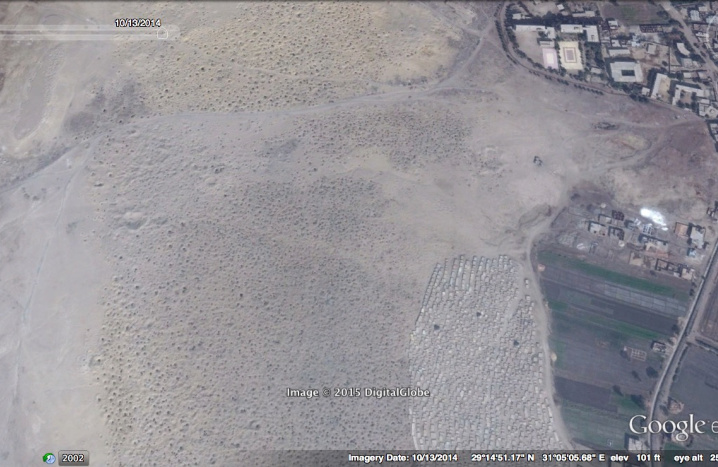
Before – Mosul Museum: Photo by Joanne Farchakh Bajjaly/American University of Rome: 2003
After – Photo from Sam Hardy via militant social media account: 26 February 2015
In a now infamous video posted by the terrorist group, ISIS filmed its mercenaries destroying historic artifacts and sculptures that lined the halls of the Mosul Museum, Iraq’s second largest museum. Home to one of the largest Assyrian and Hatrene collections, including the famous Winged Bull and the God of Rozhan, the museum exhibited artifacts and sculptures representing over 5,000 years of history in the Cradle of Civilization from ancient and Islamic Mesopotamia – the birthplace of writing, agriculture and state-level civilization. The Hatrene statues were from the archaeological site of Hatra, which lay between the Roman Empire and the Parthian Empire. These statues represented not only Hatra’s influence as a wealthy trading city in the region but also the extensive influence of neighboring cities and cultures on the people of Hatra. The Mosul Museum also displayed sculptures from ancient Assyrian sites of Nimrud and Nineveh. Nimrud was a prominent city during the Neo-Assyrian Empire, serving as the great capital city of the Empire from 879 BC-706 BCE. Nineveh is an ancient site dating back more than 8,000 years and also has significance as a major city, at one point holding the position of the largest city in the world from 662 BC-612 BCE. But the city’s might was also its downfall when an unlikely alliance of the Babylonians, Medes, Persians, Chaldeans, Scythians, and Cimmerians sacked the city in 612 BCE. Although some of the items in the museum were copies, a number of priceless artifacts were stolen, and others, as seen in the video, were intentionally destroyed.
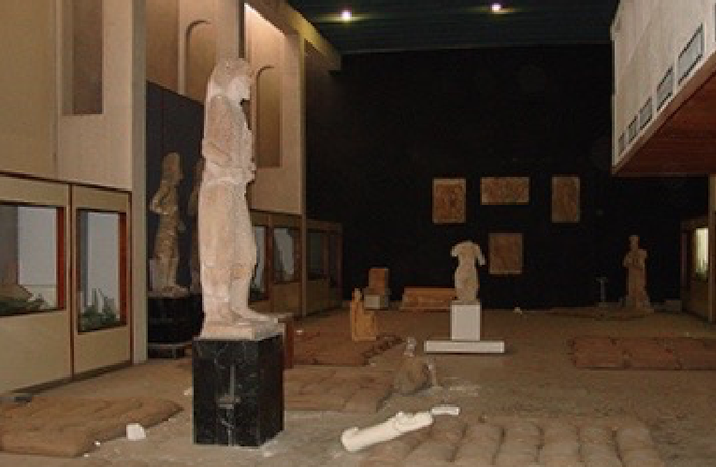
Before – Nineveh Gates: Photo by Mohammed Tawfiq al-Fakhri/Almosul Heritage (almost.com): 2009
After – Nineveh Gates: Photo via militant social media account
Perched on the eastern bank of the Tigris River, the city of Nineveh once served as the capital of the Neo-Assyrian Empire. It is one of the oldest cities in antiquity, surviving more than 8,000 years. Nineveh was settled as early as 6,000 BCE. More than 5,000 years after the area had been settled, the famous Neo-Assyrian King, Sennacherib, turned the city into one of the world’s most beautiful and largest of its time, constructing within the city walls a famous “palace without a rival” with dozens of dazzling rooms and sculptures and reliefs chronicling the empire’s greatest conquests. Some scholars believe that the gardens next to the palace contained the Hanging Gardens of Babylon, the long-lost ancient wonder of the world. Nineveh’s most famous sculptures are the lamassu, the human-headed winged bulls that have guarded this ancient Mesopotamian city for over two millennia. In a video released by ISIS, the destruction of the lamassu at the Nergal Gate vividly shows their continuous campaign of cultural cleansing. ISIS took sledgehammers and electric drills to the face and body of the ancient statues – ending more than 2,000 years of Lamassu’s mighty reign of protection over Nineveh.
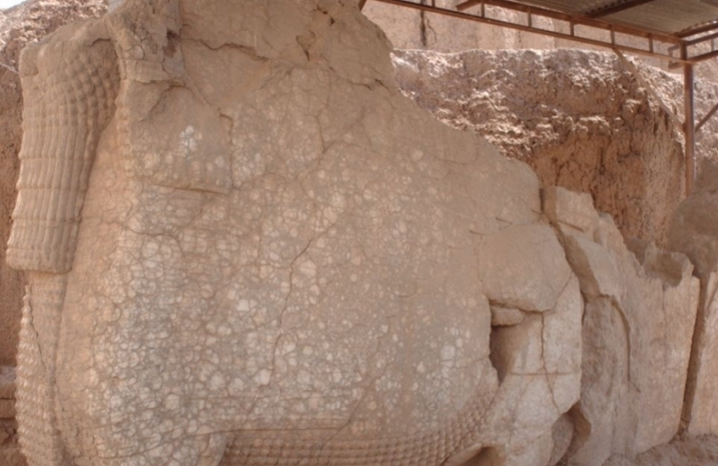
Before – Tomb of Jonah: Photo via Diyar (@DKurdistan): 24 July 2014
After – Tomb of Jonah: Photo via Diyar (@DKurdistan): 24 July 2014
The Tomb of Jonah, also known as the Mosque of the Prophet Yunus or Shrine of Nabi Yunus (Yunus is the Arabic form of Jonah) in Mosul, Iraq, is of religious significance to Islam, Christianity, and Judaism. The Prophet Jonah is the central character of the Book of Jonah in the Bible, famously known for being swallowed by a whale. Jonah’s story also appears in the Old Testament as well as in excerpts of the Qu’ran.
The tomb in Mosul is believed to be the burial place of the Prophet Yunus. It is a site that has been revered by Muslims and Christians alike given its connection to Islam and the Bible.
The Tomb of Jonah and Mosque of the Prophet Yunus was destroyed by ISIS in July 2014 in part of their march of destruction across Iraq.
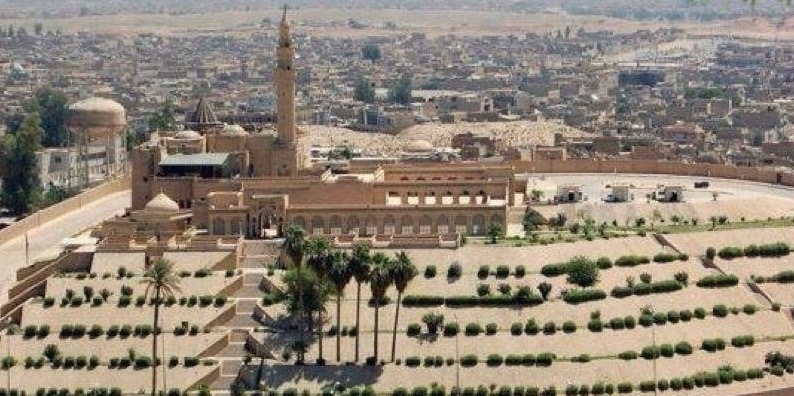
Before – Sibi Sha’ab Mosque: Photo via Adam (@4Adam): 25 August 2012
After – Sibi Sha’ab Mosque: Photo via Adam (@4Adam): 25 August 2012
The Sidi Sha’ab Mosque located in Tripoli is one of the most important mosques in Sufi Islam. It is named after the 16th century Libyan Sufi scholar, Sidi Abdullah Al-Sha’ab, who was also revered as a martyr who fought Spanish colonialists.
Al-Sha’ab’s tomb was housed in the mosque along with the tombs of approximately fifty other Sufi scholars. The Sidi Sha’ab Mosque and surrounding tombs served as a prominent religious center for the local Sufi community in Tripoli.
In August 2012, Salafist extremists who had infiltrated the Libyan government destroyed the famous Sufi mosque and tomb. Bulldozers razed the structure and its surrounding tombs as Islamic fundamentalists led the demolition of the site. Tensions between Sufis and Salafis in Libya have been tense since the 2011 Arab Spring – and Salafis have used the turmoil as an opportunity to demolish Sufi shrines, mosques and tombs. Sufi Islam is seen as a traditional mystical school of Islam and as such is considered heretical by Islamist extremists and Salafi hardliners. This interpretation of the Sufi religion by Islamic extremists contributes to the destruction of Sufi religious sites throughout Libya.
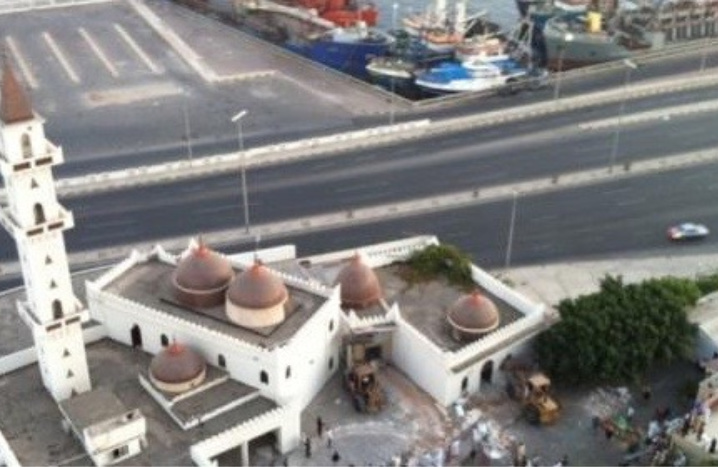
Before – Karamanli Ahmet Pasha Tomb: Photo by Faye and Steve (fayeandsteve.com)
After – Karamanli Ahmet Pasha Tomb: Photo via Libya Herald: 7 October 2014
Ahmet Pasa is the founder of the Karamanli dynasty, which at its peak influenced most of Libya during the mid-18th century. Ahmed seized the throne in the early 18th century after he murdered the Ottoman governor of Tripolitania (modern-day Tripoli). Although the Karamanli dynasty continued to pay tribute to the Ottoman padishah, it otherwise acted as an independent kingdom with a rapidly expanding economy.
The ornately decorated Karamanli Mosque was erected in the 1730s and remains the largest mosque in the medina. The mosque served as the final resting place for Ahmet Pasa and his family who are buried in its prayer halls. The tombs were destroyed by Salafi extremists in Tripoli in 2012 who consider the Sufi sect of Islam to be heretical. Sufi graves have been destroyed by Salafis throughout Libya since 2011. Many graves of Sufi saints and scholars are sites of pilgrimage for Sufi Muslims and as such are targeted as “idol worship” destruction zones by extremist Salafis.
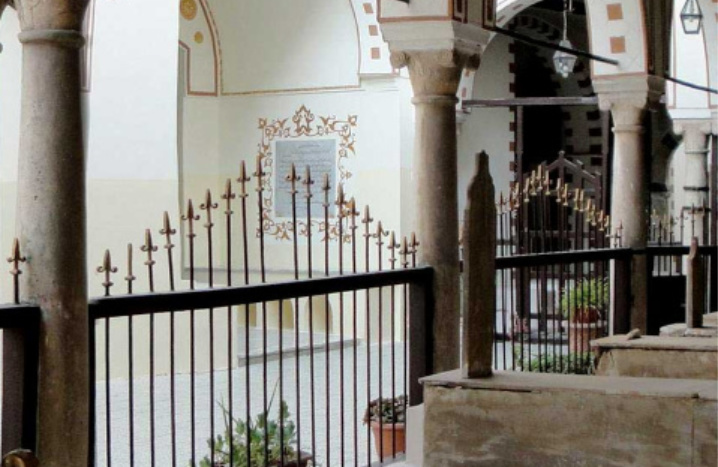
Before – Sufi Shrine: Photo via militant social media account 10 March 2015
After – Sufi Shrine: Photo via militant social media account 10 March 2015
Sufism is a mystical-ascetic aspect of Islam, which focuses on the Islamic teachings that relate to the purification of the inner self. The Senussi tribes of Libya are some of the most ardent followers of the Sufi philosophy. Sufism has played a major part in the development and formation of culture in the Ottoman world. Yet, equally, as significant, it has had a prominent role in resisting European imperialism in North Africa.
Since the 2011 Arab Spring, a wave of destruction has hit Sufi shrines, mosques and tombs across Libya at the hands of radical Salafi Islamists. The Sufi Shrine represented in these images is one of the dozens of historic Sufi shrines throughout Libya that have been destroyed by these radicalized extremists.
After the fall of Muammar Gaddafi in 2012, Salafist extremists launched a surge of attacks on Sufi shrines, mosques and tombs across Libya. These armed Islamist groups opened a wave of destruction of the tombs and shrines of famous Sufi scholars and religious leaders. Many of the tombs targeted dated back more than half of a millennium.
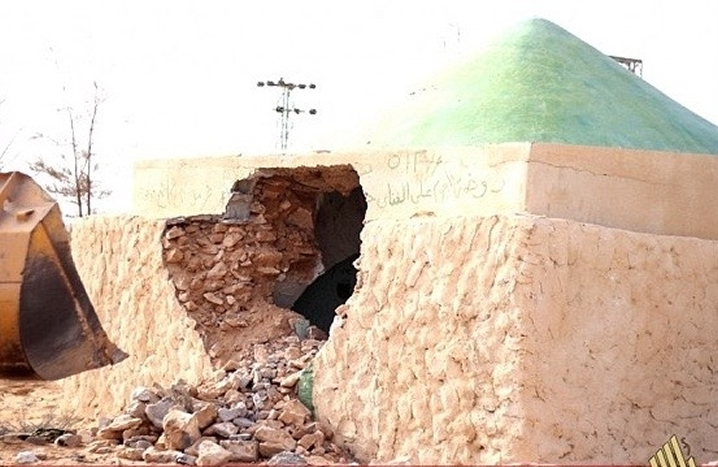
Before – Ahmed Baba Institute Manuscripts: (c)Photo by Iwan Bann: August 2009
After – Ahmed Baba Institute Manuscripts: Photo by Trevor Snapp
The Ahmed Baba Institute of Higher Learning and Islamic Research is a library and research center based in Timbuktu. It is named after Timbuktu’s most famous scholar from the 17th century. The library houses more than 20,000 historic Islamic manuscripts dating back to the 14th and 16th centuries. In total there are believed to be more than 300,000 Islamic manuscripts from Timbuktu including those from both the institute as well as private collections. The current institute is the result of a bilateral agreement that had been formed between Mali and South Africa for the continued preservation, restoration, and conservation of African heritage.
The Islamic manuscripts not only tell much of Mali’s recent history but also represent a crucial period in the history of Timbuktu as a historic university town and seat of Islamic scholars. The majority of the manuscripts in the collection date back to the 14th and 16th centuries in Mali. The carefully preserved Islamic manuscripts became a target in January 2013 when radical Tuareg Islamists set fire to the Ahmed Baba Institute building. A traditionally nomadic Berber people, the Tuareg Islamists leading the rebellion in Mali in 2012 were trained by the Islamic Legion of Libya’s Muammar Gaddafi. In Mali, they set fire to the institute and library and several other buildings in Timbuktu as they fled the arrival of French troops. Locals of Timbuktu reported that the Islamists had been using the Institute for sleeping facilities before they were forced from the city. The burning of the institute’s manuscripts along with the destruction of Sufi shrines furthered Islamists’ efforts to destroy the preserved heritage of Mali. Courageous efforts by the local people of Timbuktu before and during the Islamist occupation secured the bulk of the manuscripts in safe locations, protecting hundreds of thousands of irreplaceable documents.
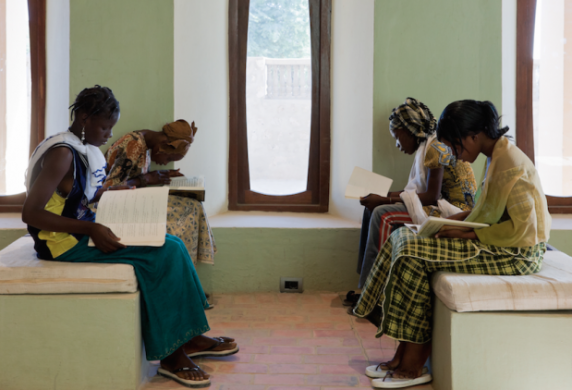
Before – Mausoleum of Cheick Alpha Moya: (c)Photo by UNESCO/Ministere de la culture du Mali/DNPC
After – Mausoleum of Cheick Alpha Moya: (c)Photo by UNESCO/Ministere de la culture du Mali/DNPC
Timbuktu is a UNESCO World Heritage-listed site known for its storied past as a seat of scholarly Islam. The city is located at what is considered the gateway to the Sahara Desert. Founded in the fifth century, Timbuktu did not reach its cultural significance until the 15th and 16th centuries when it was renowned for its 180 Koranic schools. Timbuktu is known for its uniquely constructed ancient mosques, sixteen mausoleums, including the Cheick Alpha Moya Mausoleum, and other sacred public sites. The mosques and mausoleums are considered exceptional examples of earthen architecture and of traditional maintenance techniques that are continued through the present day, signifying these structures as an important part of the social and cultural fabric of the people of Timbuktu.
The continued cultural attention to these pristine Islamic sites made them a target in the crosshairs of Islamist extremist destruction. In 2012, Ansar Dine, an Islamist group linked to Al-Qaeda in the Islamic Maghreb as well as several other Islamist terror organizations, took sledgehammers to the earthen and mud brick edifices including the Cheick Alpha Moya Mausoleum.
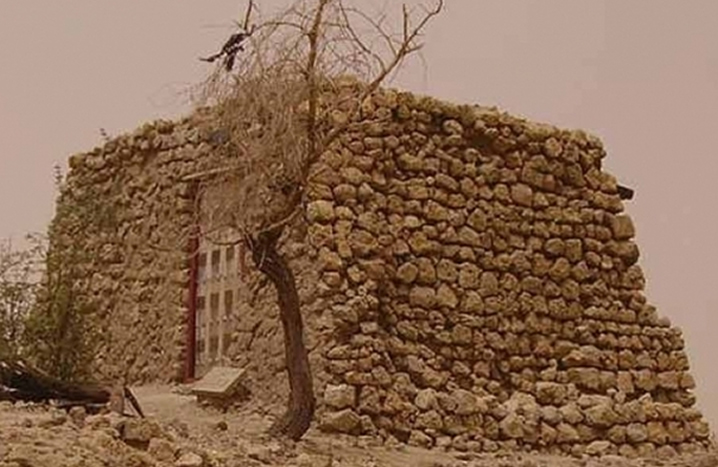
Before – Palmyra Mausoleum of Mohammad Bin Ali: Photo via militant social media account
After – Palmyra Mausoleum of Mohammad Bin Ali: Photo via militant social media account
The Mausoleums of Palmyra lie near the ancient Roman archaeological site of Palmyra, a UNESCO World Heritage Site. These mausoleums hold the remains of some of the most revered figures in Shi’ite Islam. From its inception, the site of Palmyra served as a religious center. The gods of early Palmyra were from the northwestern Semitic pantheon as well as the Mesopotamian and Arab pantheons. During the expansion of the Roman Empire across Syria (64 BCE – 395 CE) the pagan deities at Palmyra were replaced by Christianity, and many of the temples at the site converted into churches. However, Christianity’s reign at the site lasted for about half a millennium until it was gradually replaced by Islam following the Arab conquest in 634 CE. The Islamic mausoleums constructed during that period stood at this site until their destruction in 2015.
Mohammad Bin Ali, a deeply revered Shi’ite saint, was a descendant of Imam Ali, cousin of Islam’s Prophet Muhammad. His gravesite sits north of Palmyra and was one of several tombs that served as a major point of Islamic pilgrimage for Shi’ites in the region. This mausoleum is one of two Palmyra mausoleums destroyed by ISIS explosives. ISIS has destroyed more than fifty historic mausoleums in the Syrian regions under its control.

Before – Umayyad Mosque: Photo via Daily Mail UK: 24 April 2013
After – Umayyad Mosque: (c)Photo by Aleppo Media Center/AP
The Umayyad Mosque, also known as the Great Mosque of Aleppo, is over 1,200 years old. It was constructed in 717 CE by the Umayyad Caliph Suleyman, and is the largest mosque in the city of Aleppo, Syria. The mosque is located in the al-Jalloum district of the Ancient City of Aleppo, which is a designated UNESCO World Heritage Site.
The site that the mosque sits upon once served as an ancient Hellenistic agora and was later transformed to a religious site during the Roman period in Syria which spanned from 64 BCE to 395 CE, when it served as the gardens for the Cathedral of Saint Helena. The Umayyad Mosque that currently stands is believed to hold the remains of the father of John the Baptist, Zechariah. Zechariah is a prophet in the Qur’an and is believed by Muslims to have been the guardian of Mary, mother of Jesus.
The initial mosque structure was built during the 8th century but its famous minaret dates to 1090 CE. The Great Mosque’s minaret is considered unique in the overall scope of Muslim architecture, encompassing Mediterranean elements and Gothic style architecture rarely seen elsewhere in the region. The famous minaret towered over the Ancient City of Aleppo for nearly 1,000 years until its destruction during the Syrian Civil War in 2013 when it fell during a barrage of heavy gunfire exchange between Syrian government forces and Syrian rebels.
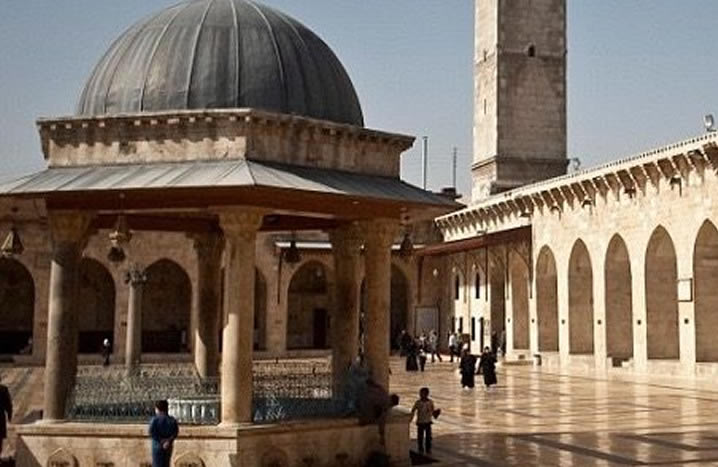
Before – Omari Mosque: Photo by Syrian Uprising Information Center: 13 April 2013
After – Omari Mosque: Photo by Syrian Uprising Information Center: 13 April 2013
The Omari Mosque in Daraa, Syria is one of the oldest mosques in the world, dating back to the seventh century. The Omari Mosque has modern significance as well; it has been called one of the birthplaces of the Syrian revolution. The Omari Mosque had served as a headquarters for Syrian demonstrators throughout clashes and the siege of Daraa that eventually sparked a civil war following the death of hundreds of protesters in Daraa at the hands of the Syrian Government.
The minaret of the mosque built by Caliph Omar bin al-Khattab was the first in the entire Levant. However, the mosque’s and minaret’s historical significance have not spared its destruction. In April 2013, Syrian government forces destroyed the minaret after the Omari Mosque sustained several days of shelling from Assad’s military.
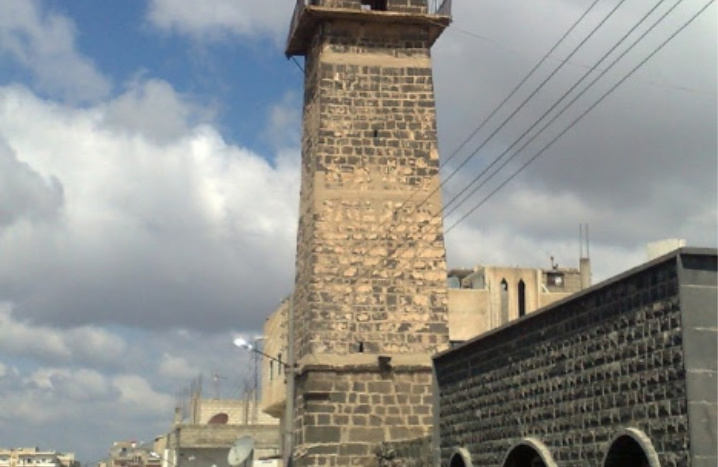
Before – Lions of Hadatu: Photo by the Association for the Protection of Syrian Antiquities: 12 June 2014
After – Lions of Hadatu: Photo by the Association for the Protection of Syrian Antiquities: 12 June 2014
Ancient Hadatu, or Arlan Tash, is an archaeological site in northern Syria located in present-day Aleppo Governorate. This city served as the center of an Iron Age Aramean kingdom but was conquered by the Assyrians in the 9th century BCE. It is home to immense carved basalt lions from the 8th century who guarded the entrance to an Assyrian palace that was subsequently built on the site. A shrine to Ishtar – the Assyrian goddess of love, war, fertility, and sexuality, was also built on this site. The city walls were extensively carved with stone relief sculptures of hunting scenes and military parades.
Two of the carved lions were placed on display in a park nearby Ar-Raqqa. ISIS crushed these ancient statues with earthmovers when they captured the city.
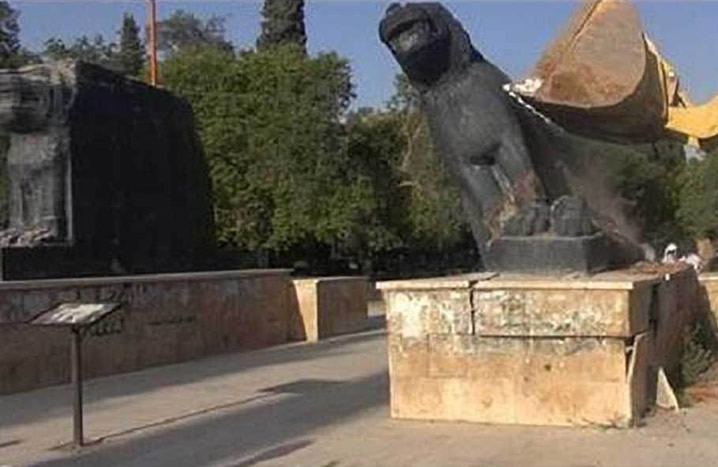
Before – Tomb of Sufi Saint Sufyan Bin Abdullah: Photo by Sam Hardy/HyperAllergic via Shabwaah Press and Al Amal News: 11 February 2015
After – Tomb of Sufi Saint Sufyan Bin Abdullah: Photo by Sam Hardy/HyperAllergic via Shabwaah Press and Al Amal News: 11 February 2015
The Tomb of Sufi Saint and Islamic Scholar Sufyan Bin Abdullah is more than 800 years old and is located in Al Hota town in the Lahij province of Yemen. Sufyan Bin Abdullah was renowned for ousting the Crusaders from Jerusalem in 1187 CE during his fight for Sultan Saladin’s army.
Al-Qaeda affiliated terrorists, following a pattern of attacks on Sufi sites and structures across the Middle East and North African region, attacked the Tomb of Sufi Saint Sufyan Bin Abdullah. In February 2015, the tomb was ransacked and desecrated, and the structure destroyed by pro-al-Qaeda Ansar al-Sharia. The terrorist group bombed the tomb, tore down the structure and dug up the grave of the Sufi Saint, leaving his remains strewn across the rubble of the ruined tomb.
